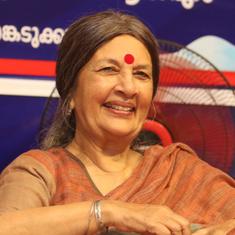The Big Story: Poll self-goal
As four Lok Sabha seats and nine Assembly seats were up for bye-elections on Monday, the process was dogged by controversy. Large numbers of booths experienced technical failures, mostly related to voter verifiable paper audit trail machines. The VVPAT system produces paper receipts that allow voters to verify that the electronic voting machine has accurately recorded their choices.
The problem was acute enough to warrant repolling at select booths in three seats on Wednesday.
The most widespread faults were witnessed in Kairana in Uttar Pradesh, where as many as 20.8% of the VVPAT machines failed. This was nearly double the average failure rate of 11.6% that was recorded across the constituences that voted on Monday. Controversially, the Opposition alleged that the failures in Kairana mainly occured in areas with large minority populations. This, they insinuated, was a means to delay voting and reduce turnout. The Kairana turnout was only 54% on Monday, a sharp drop of 18 percentage points compared to 2014.
This is not the first time issues around VVPATs have surfaced, ever since the process was introduced in the 2017 Goa Assembly election. In February this year, Scroll.in reported that 88 VVPAT systems had failed during the Meghalaya Assembly elections. However, the scale of VVPAT failure seen in Kairana was significantly higher at 20.8% compared to Meghalaya’s 2.8%.
The Meghalaya errors were blamed on a lack of technical competence and training – a reason that the Election Commission cited again in Kairana. This, however, raises the question: if the commission knew that training was a challenge in February, why had it failed to remedy this by May?
The Election Commission is also citing heat as a possible reason for the high rate of technical failures in Kairana. That India is a largely a hot, tropical country should not come as a surprise to anyone. It seems startling that live elections were treated as a testing lab for the equipment.
These large-scale glitches come at a time when a number of Opposition parties are raising questions about the digitisation of the voting process in India. On Tuesday, the Uttar Pradesh’s Samajwadi Party asked for a return to paper ballots. Earlier, parties such as the Congress and the Bahujan Samaj Party had also asked for electronic voting machines to be junked.
Many of the allegations around large-scale EVM tampering do not carry much weight and are possibly partisan accusations made by aggrieved losers. Yet, both problems cited by the Election Commission in Kairana – the lack of training and low heat resistance – seem unlikely to be fixed quickly. If a small bye-poll saw such a high rate of failure, what will happen when VVPATs are introduced in the 2019 Lok Sabha elections? The commission needs to explain not only the challenge at hand but also the steps it is taking to fix them to reassure Indians that the election process is indeed reliable.
The Big Scroll
- A close election is much more likely to be the target of small-scale EVM tampering than a landslide, writes Keshava Guha.
- It was not Lotus-Lotus: How misreporting led to a controversy over EVMs in Madhya Pradesh, writes Abhishek Dey.
- The real challenge is to remove the trust deficit. The offer to demonstrate tampering of EVMs can only be one step in that direction, argues Poorvi L Vohra. It’s not about whether recent elections were rigged, as alleged. It is about a transparent mechanism for determining the truth.
- Used for the first time in Meghalaya, paper trail machines hold up polling, reports Arunabh Saikia.

Punditry
- Modi government at four years: It has pushed through a range of structural reforms whose results will show, argues Arvind Panagariya in the Times of India.
- Till all doubts – genuine or otherwise – about EVMs are settled, the argument that ballot papers are more foolproof holds water, contends Rakesh Mohan Chaturvedi in the Economic Times.
- Will simultaneous elections harm or benefit India, asks Chaitanya Kalbag in BloombergQuint.
Giggle
#Cartoon #EVMs pic.twitter.com/WLC5osqapt
— alok nirantar (@caricatured) May 29, 2018
Don’t Miss
Aarefa Johari reports on how three tainted companies retained their grip over Madhya Pradesh’s nutrition scheme for children.
“Instead of decentralising the ICDS food production in keeping with Supreme Court orders, the state government allowed Madhya Pradesh State Agro Industries Development Corporation Limited to establish three joint venture companies between 2006 and 2009, for the purpose of manufacturing additional quantities of take-home rations. The joint venture companies are MP Agro Food and Industries Limited, MP Agrotonics Limited and MP Agro Nutri Foods Limited.
In 2009, a damning report by the Union government’s Comptroller and Auditor General or CAG had indicted the state’s public sector undertaking for allowing its joint venture companies to profit at the cost of the government and the beneficiaries of ICDS programmes.”










